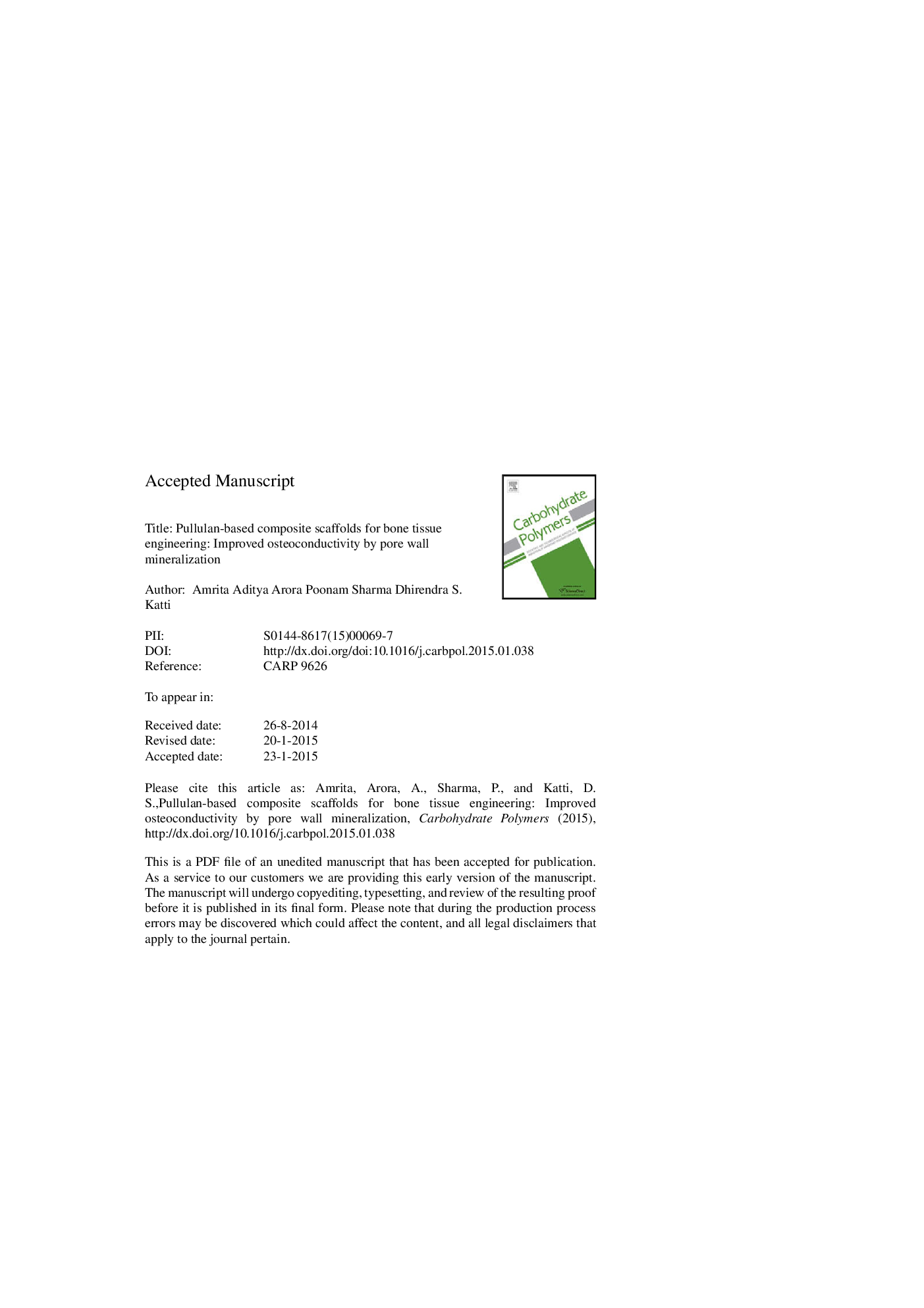| Article ID | Journal | Published Year | Pages | File Type |
|---|---|---|---|---|
| 7789031 | Carbohydrate Polymers | 2015 | 36 Pages |
Abstract
Porous hydrogels have been explored for bone tissue engineering; however their poor mechanical properties make them less suitable as bone graft substitutes. Since incorporation of fillers is a well-accepted method for improving mechanical properties of hydrogels, in this work pullulan hydrogels were reinforced with nano-crystalline hydroxyapatite (nHAp) (5 wt% nHAp in hydrogel) and poly(3-hydroxybutyrate) (PHB) fibers (3 wt% fibers in hydrogel) containing nHAp (3 wt% nHAp in fibers). Addition of these fillers to pullulan hydrogel improved compressive modulus of the scaffold by 10 fold. However, the hydrophilicity of pullulan did not support adhesion and spreading of cells. To overcome this limitation, porous composite scaffolds were modified using a double diffusion method that enabled deposition of hydroxyapatite on pore walls. This method resulted in rapid and uniform coating of HAp throughout the three-dimensional scaffolds which not only rendered them osteoconductive in vitro but also led to an improvement in their compressive modulus. These results demonstrate the potential of mineralized pullulan-based composite scaffolds in non-load bearing bone tissue engineering.
Related Topics
Physical Sciences and Engineering
Chemistry
Organic Chemistry
Authors
Amrita Amrita, Aditya Arora, Poonam Sharma, Dhirendra S. Katti,
